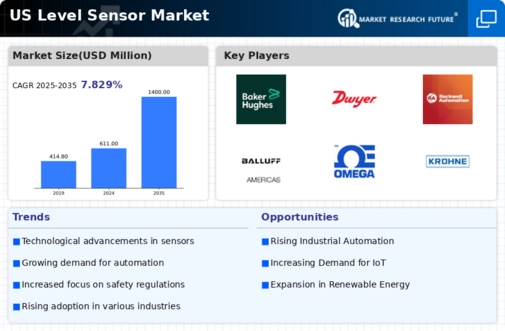The US Level Sensor Market is characterized by a dynamic competitive landscape where companies continually innovate and adapt to meet the evolving demands of various industries including oil and gas, automotive, food and beverage, and pharmaceuticals. The market has seen a plethora of technological advancements, with firms striving to enhance precision, reliability, and efficiency in level sensing technologies. This evolving environment is shaped by various factors such as the increasing demand for automation in industries, the growing focus on safety and compliance, and the need for more sustainable operational practices.
Understanding the competitive insights within this market involves recognizing key players, their product offerings, strategic initiatives, and the overall market share dynamics that guide their performance. Emerson Electric stands out in the US Level Sensor Market with its robust portfolio of advanced level sensing solutions suited for various applications. The company has established a significant market presence with its innovative technologies that often incorporate predictive analytics and smart technologies, enhancing operational efficiency for users. Emerson Electric's strengths can be attributed to its rich history of engineering excellence and a well-established brand reputation in automation solutions.
The company has also invested heavily in research and development to maintain its competitive edge. With a focus on integrating IoT capabilities into their level sensor products, Emerson Electric is poised to lead the market with solutions that not only monitor level measurements but also provide actionable insights, promoting a proactive approach to maintenance and operations. Baker Hughes, while primarily recognized for its contributions to the oil and gas sector, has made significant strides in the US Level Sensor Market by offering various products and services that cater to industrial automation and sensors technology.
The company's key products include advanced level sensors designed for use in harsh environments, ensuring reliability and accuracy. Baker Hughes has developed a solid market presence through a combination of strategic partnerships, focused acquisitions, and sustained investment in technological innovation. The company leverages its extensive industry knowledge and customer relationships to offer tailored solutions that address specific customer needs. Its strengths lie in its ability to provide comprehensive solutions and services that encompass installation, maintenance, and support, positioning Baker Hughes as a trusted partner in level sensing applications.
Furthermore, its recent mergers and acquisitions have broadened its product range and enhanced its market reach within the US.


















